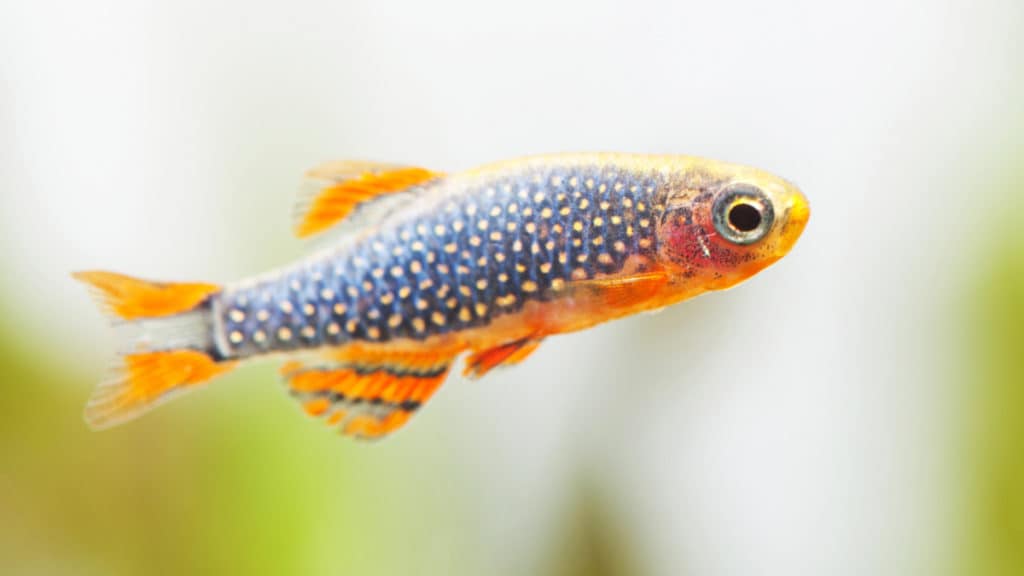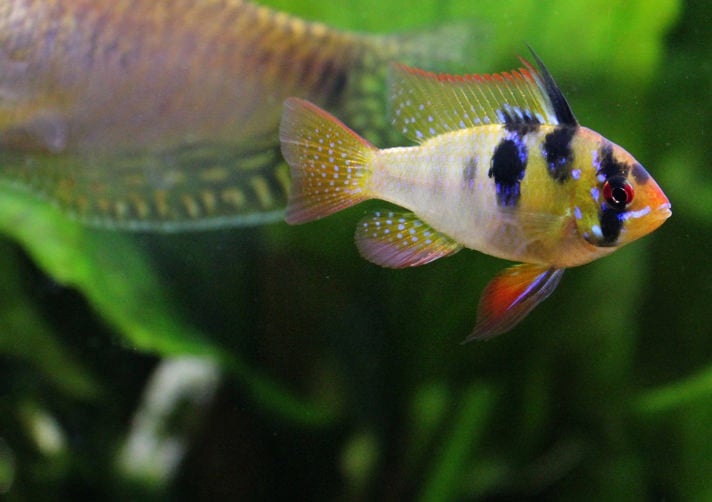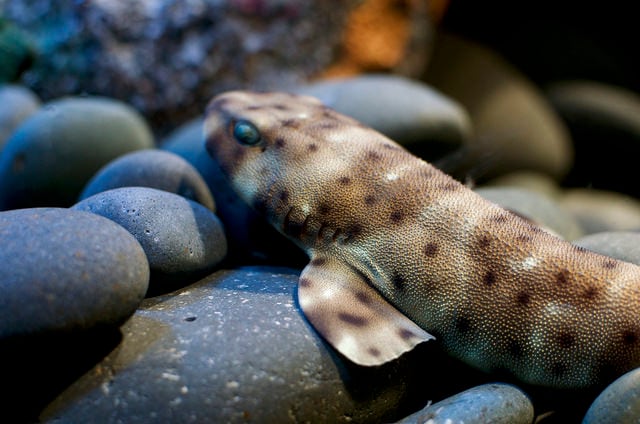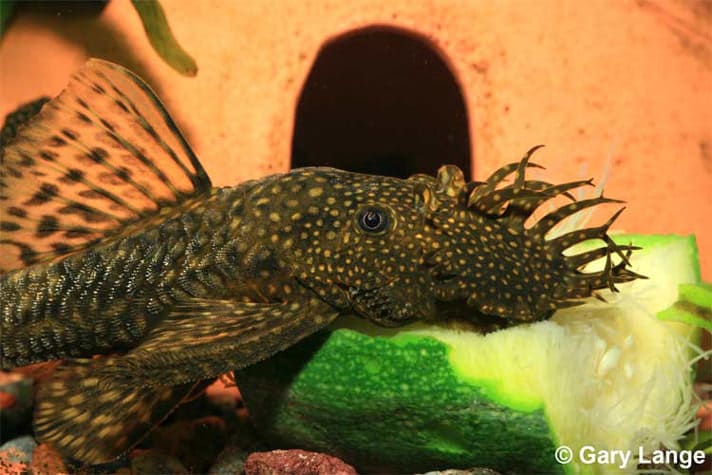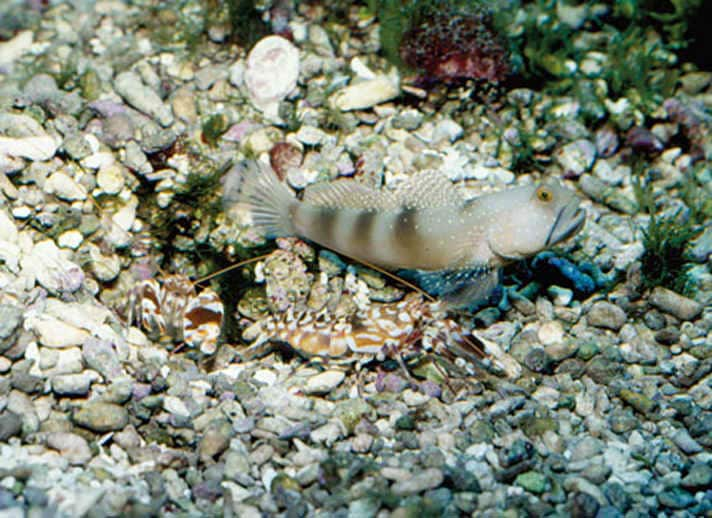Several years ago, a beautiful new fish took the fish aquarium hobby by storm. At the time, it was called the “galaxy rasbora” or the “fireworks rasbora” for its beautiful pattern of fine white dots on an inky blue-black background. It reminded many aquarists of looking up into a starlit sky at night.
The red streaks on the male’s unpaired fins were reminiscent of streaking fireworks across the sky. These striking markings even led to the first scientific description in a new genus — Celestichthys — literally the “galaxy” or “celestial fish.” Further research moved it to the genus Danio. Now, the most widely used common name, the celestial pearl danio (or simply CPD), is based on its scientific name.
This beauty was the subject of all kinds of rumors when it was first brought to the hobby. But the truth was that it was simply something new and different from an area of the world that has been little explored for the aquarium hobby. Rumors surrounding this beauty were that it was only found in one small pond and that the aquarium hobby had completely (or almost completely) wiped the fish out.
The truth turned out to be much different. The fish’s population is unbelievably resilient. These miniature fish breed more quickly than rabbits and are much more fecund. They even put the proverbial guppies to shame! And they are not only found in a single over-fished pond. They are found throughout a relatively wide area in small mountain ponds in their native Burma. It’s still not clear exactly why these rumors started.
Whatever the real reason, aquarists soon discovered that due to their rapid reproduction, they quickly not only repopulated the original location, but they soon were overflowing the tanks of dedicated fishkeepers around the world. Within weeks of their initial introduction to hobbyists, successful spawning reports were beginning to appear. This occurred first in England, as for some reason almost all of the fish first imported to the United States were males. Females soon arrived, and the fish is now firmly established in the hobby.
These are tiny fish that are not really suitable for a community tank. They do best in a heavily planted 5- to 10-gallon tank by themselves. Maximum size is just under an inch. They are sometimes shy, and males can be somewhat aggressive with one another, so it is best to provide them with plenty of cover so that they feel secure — the more plants in the tank, the more likely that they will be out in the open. In a small planted tank, the fish spawn almost daily, laying a few eggs at a time. A few fry will survive to eventually join the adults at feeding time.
Some keepers feed them micro-sized pellet fish foods and finely ground flakes, but I’ve had the best long-term success feeding them a staple diet of live foods. They get a daily feeding of microworms, as these worms are of mixed sizes from newborn to adult, allowing even newly free-swimming CPDs to feed.
I also do one feeding of live newly hatched brine shrimp. Occasionally, I give the tank Grindal worms for the adult fish or even Daphnia, depending on what I’m feeding my other fish that day.
These fish come from water that is slightly alkaline with a pH above 7.0, but they have thrived for hobbyists around the world in varying water parameters. Since these fish are from mountain pools, their preferred water temperatures are in the upper 60s to low 70s Fahrenheit; they will tolerate warmer water for several months, though spawning activity will be curtailed.
Spawning is fairly simple. Separate out a female for a week or so, giving her a couple of feedings a day of meaty foods to allow her to build up a reserve of ripe eggs. A small 2-gallon tank is plenty big for a spawning attempt. Fill it about halfway with water from the main tank, and top this off with new water. Add a pile of nylon spawning mops or clean Java moss in one corner. No aeration or heating is necessary. In the evening, add the female to the tank. Just before lights-out, add the male. Spawning should commence at first light, and up to 50 eggs may be laid, though most spawns are a bit smaller. Remove the adults after spawning, as they will be hungry and are not above eating their own eggs.
Then comes the wait.
Depending on the exact temperature, the eggs will hatch in a couple of days, and the young fish will be seen as tiny slivers hanging in the mops/moss and on the glass near the bottom. After a few more days, they will be free-swimming. At this time, begin feeding twice a day. I like to use microworms, as the worms are perfectly sized, and they stay near the bottom, which is also where you will find most of the young fish. By gently lifting up the spawning media, you will be surprised by how many fry are there.
Add a few young ramshorn or mystery snails to help clean up uneaten food, and perform regular water changes with water from the adults’ tank. Many breeders have had problems with young cyprinids being sensitive to “new” water, so this technique helps alleviate this potential problem. At the same time, make sure you are doing large weekly water changes on the adults’ tank, so it is healthy.
Young CPDs grow quickly, and they are ready to start spawning by the time they are just 10 weeks old. I’ve found many eggs and newly hatched fry in a tank with juvenile CPDs that I thought were still too young to spawn. At this time, you will need to find homes for the extra fish. Celestial pearl danios are in great demand, so if you have a good rapport with a local shop owner, you should be able to trade them for supplies or more fish.
For more information check out: Keeping the Celestial Pearl Danio.
Posted by: Chewy Editorial
Share:
